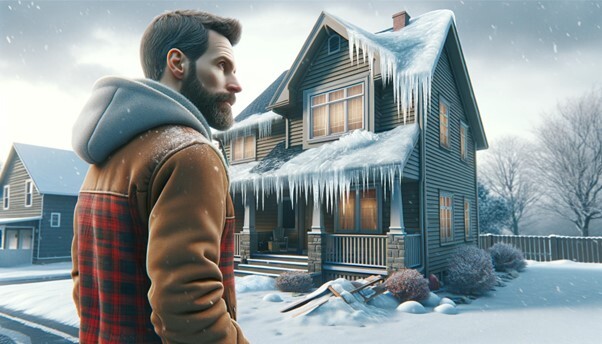- 1-905-452-8193
- Contact Us
- Member Login
- Get Listed Today
- 220,911 members

As the winter season blankets the landscape in a serene white, it also brings along a hidden menace to your home's roof known as "ice damming." This often-overlooked issue can wreak havoc on your roof, leading to costly repairs and damage to your property.
In this blog post, we will dive deep into understanding what ice damming is, its causes, effects, and most importantly, how you can prevent it. By the end of this article, you'll have a comprehensive grasp of this winter headache and learn how proper insulation, such as spray foam insulation and the expertise of Ottawa Insulation, can come to your rescue.
Ice damming is a phenomenon that occurs during the winter when snow on your roof melts and then refreezes near the roof's edge. This ice buildup forms a barrier, preventing further snowmelt from draining properly. The result? Water backs up behind this ice dam, potentially infiltrating your home, causing leaks, and damaging your roof's structure.
Understanding the causes of ice damming is essential in preventing it. Several factors contribute to the formation of ice dams, including:
Poor insulation allows warm air to escape from your home's interior, heating the roof and causing snow to melt.
Inefficient attic ventilation can lead to varying temperatures on your roof, promoting uneven snowmelt.
Heavy snowfall followed by freezing temperatures can accelerate ice dam formation.
Low-slope roofs are more prone to ice damming due to their reduced ability to shed water.
Ignoring ice damming can result in severe consequences for your home. Some of the common effects include:
Ice dams can lift shingles, causing structural damage and reducing the roof's lifespan.
Leaks caused by ice damming can damage your ceilings, walls, and insulation.
Moisture from ice dams can create an ideal environment for mold growth, posing health risks.
Poor insulation and ice damming can lead to heat loss, causing higher energy consumption and costs.
Preventing ice damming starts with proper insulation and ventilation. Here are some steps you can take:
Invest in high-quality insulation, such as spray foam insulation, to maintain a consistent temperature on your roof.
Identify and seal any gaps or leaks in your attic to prevent warm air from escaping.
Ensure proper attic ventilation to regulate the temperature and reduce snowmelt.
Safely remove excess snow from your roof to minimize ice dam formation.
For your information, when it comes to safeguarding your home against ice damming, Ottawa Insulation is your go-to expert. Their years of experience and dedication to superior insulation solutions, including cutting-edge spray foam insulation, make them the ideal choice for protecting your home from ice damming and other insulation-related issues.
In conclusion, ice damming is a winter phenomenon that can wreak havoc on your roof and home if left unattended. Understanding its causes, effects, and preventive measures is crucial in ensuring a safe and warm home during the winter months. Remember, the right insulation, such as spray foam insulation, and the expertise of professionals like Ottawa Insulation, can be your allies in combating ice damming and keeping your home cozy and damage-free all season long.
